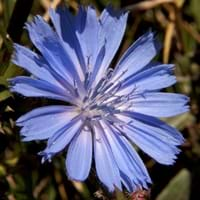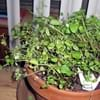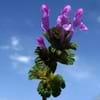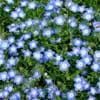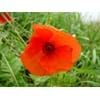Life Span
Annual and Perennial
Perennial
Type
Herbaceous Perennial, Herbs
Flowering Plants, Shrubs, Vegetable
Origin
Europe, Middle East
Mediterranean
Types
Mentha × piperita 'Candymint', Mentha × piperita 'Citrata', Mentha × piperita 'Crispa'
Belgian Endive, Red Belgian Endive, Curly Endive (a.k.a. Frisee), Escarole, Radicchio (Chioggia) and Radicchio (Chioggia)
Number of Varieties
Not Available
Habitat
Wide range of ecological site
Grassland, Mediterranean region, Wild
USDA Hardiness Zone
3-7
3-9
AHS Heat Zone
Not Available
9-1
Sunset Zone
Not Available
A1, A2, A3, H1, H2, 1a, 1b, 2a, 2b, 3a, 3b, 4, 5, 6, 7, 8, 9, 10, 11, 12, 13, 14, 15, 16, 17, 18, 19, 20, 21, 22, 23, 24
Habit
Clump-Forming
Clump-Forming
Flower Color Modifier
Bicolor
Not Applicable
Fruit Color
Non Fruiting Plant
Brown
Leaf Color in Spring
Dark Green
Green
Leaf Color in Summer
Green, Dark Green
Green
Leaf Color in Fall
Dark Green, Green
Green
Leaf Color in Winter
Light Green
Green
Leaf Shape
Ovate elongated
Oblong
Plant Season
Spring, Summer
Summer
Sunlight
Full Sun, Partial Sun
Full Sun, Part sun
Type of Soil
Loam
Loamy, Sandy
The pH of Soil
Neutral, Slightly Acidic, Slightly Alkaline
Acidic, Alkaline, Neutral
Soil Drainage
Well drained
Well drained
Bloom Time
Late Summer, Mid Summer
Summer
Tolerances
Drought
Not Available
Where to Plant?
Container, Ground
Ground
How to Plant?
From Rhizomes, Vegetative Reproduction
Seedlings
Plant Maintenance
Low
Medium
Watering Requirements
Requires plenty of water during the growing season
Keep the ground moist but not water-logged, Prefer drip-irrigation instead of Over-head watering, Requires regular watering, Requires watering in the growing season
In Summer
Lots of watering
Lots of watering
In Spring
Moderate
Moderate
In Winter
Less Watering
Average Water
Soil pH
Neutral, Slightly Acidic, Slightly Alkaline
Acidic, Alkaline, Neutral
Soil Type
Loamy
Loamy, Sandy
Soil Drainage Capacity
Well drained
Well drained
Sun Exposure
Partial Sun
Full Sun, Part sun
Pruning
Remove damaged leaves, Remove dead branches, Remove dead leaves, Requires very little pruning
Cut or pinch the stems, Prune prior to new growth, Prune to stimulate growth, Remove dead or diseased plant parts, Remove deadheads
Fertilizers
All-Purpose Liquid Fertilizer
All-Purpose Liquid Fertilizer
Pests and Diseases
Red blotch
Aphids, Loopers, Root rot, Viruses, Worms
Plant Tolerance
Drought
Drought
Flower Petal Number
Double
Not Available
Fragrant Bark/Stem
Yes
No
Foliage Texture
Coarse
Medium
Foliage Sheen
Matte
Matte
Attracts
Bees
Butterflies
Allergy
flushing of face, Headache, Heartburn, Sore Throat
Not Available
Aesthetic Uses
Not Used For Aesthetic Purpose
Not Used For Aesthetic Purpose
Beauty Benefits
Maintains teeth healthy
Not Available
Environmental Uses
Prevent Soil Erosion
Air purification
Medicinal Uses
Mouth Sores, Pain killer, Vitamin A
Cancer, Digestive disorders, Inflammation, Liver problems, Stomach pain
Part of Plant Used
Flowers, Leaves
Leaves, Root
Other Uses
In toothpaste, Mouth freshner, Used in flavouring curries, teas, used in Indian cuisine in curries
Used as an ingredient in coffee
Used As Indoor Plant
Yes
No
Used As Outdoor Plant
Yes
Yes
Garden Design
Herb
Not Available
Botanical Name
Mentha × piperita
Cichorium intybus
Common Name
Peppermint
Blue daisy, blue dandelion, blue sailors, blue weed, bunk, coffeeweed, cornflower, hendibeh, horseweed, ragged sailors, succory, wild bachelor's buttons, and wild endive
In German
Pfefferminze
Chicoree
In French
Menthe poivrée
chicorée
In Spanish
Mentha × piperita
achicoria
In Portuguese
Hortelã-pimenta
chicória
In Polish
Mięta pieprzowa
cykoria
In Latin
Peppermint
pancratium
Phylum
Magnoliophyta
Magnoliophyta
Class
Magnoliopsida
Magnoliopsida
Family
Lamiaceae
Asteraceae
Clade
Angiosperms, Asterids, Eudicots
Angiosperms, Asterids, Eudicots
Tribe
Mentheae
Cichorieae
Subfamily
Not Available
Cichorioideae
Number of Species
Not Available
Season and Care of Peppermint and Chicory
Season and care of Peppermint and Chicory is important to know. While considering everything about Peppermint and Chicory Care, growing season is an essential factor. Peppermint season is Spring and Summer and Chicory season is Spring and Summer. The type of soil for Peppermint is Loam and for Chicory is Loamy, Sandy while the PH of soil for Peppermint is Neutral, Slightly Acidic, Slightly Alkaline and for Chicory is Acidic, Alkaline, Neutral.
Peppermint and Chicory Physical Information
Peppermint and Chicory physical information is very important for comparison. Peppermint height is 60.00 cm and width 50.00 cm whereas Chicory height is 3.00 cm and width 1.50 cm. The color specification of Peppermint and Chicory are as follows:
Peppermint flower color: Purple
Peppermint leaf color: Dark Green
Chicory flower color: Blue
- Chicory leaf color: Green
Care of Peppermint and Chicory
Care of Peppermint and Chicory include pruning, fertilizers, watering etc. Peppermint pruning is done Remove damaged leaves, Remove dead branches, Remove dead leaves and Requires very little pruning and Chicory pruning is done Cut or pinch the stems, Prune prior to new growth, Prune to stimulate growth, Remove dead or diseased plant parts and Remove deadheads. In summer Peppermint needs Lots of watering and in winter, it needs Less Watering. Whereas, in summer Chicory needs Lots of watering and in winter, it needs Average Water.

